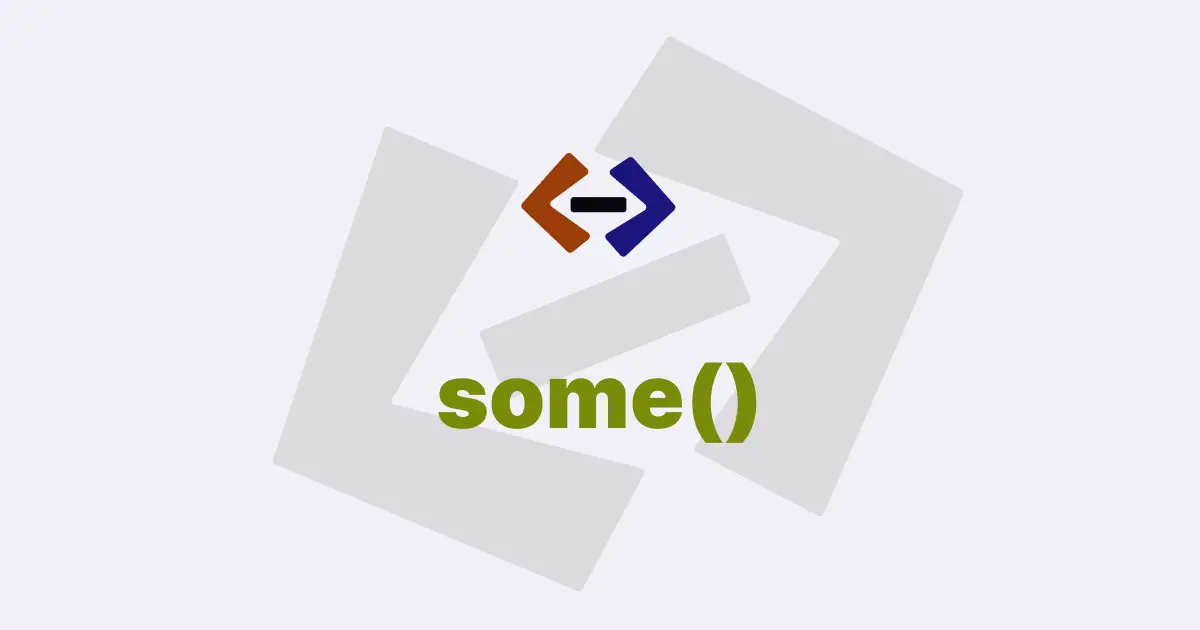The indexOf() method in JavaScript is a powerful tool that allows developers to search for the occurrence of a specified value within an array or a string.
It returns the index at which the value is found, which can be used to perform various operations such as element retrieval, element deletion, or conditional logic.
The indexOf() method is widely used in JavaScript programming for tasks such as data manipulation, searching, and filtering.
Arrays are one of the fundamental data structures in JavaScript, and the indexOf() method provides a convenient way to search for values within an array.
Array:
The syntax for the indexOf() method for arrays is as follows:
array.indexOf(valueToFind[, fromIndex])Where array is the array on which the method is called, valueToFind is the value that needs to be searched, and fromIndex (optional) is the index from which the search should start. If fromIndex is not provided, the search starts from the beginning of the array (index 0).
The indexOf() method returns the index of the first occurrence of valueToFind in the array, or -1 if the value is not found. This can be useful for tasks such as checking if an array contains a particular value, or finding the position of an element in an array.
For example:
const fruits = ["apple", "banana", "cherry", "date", "elderberry"];
const index = fruits.indexOf("banana");
if (index !== -1) {
console.log("Found at index:", index);
} else {
console.log("Not found");
}In this example, the indexOf() method is used to search for the value 'banana' within the fruits array. Since 'banana' is found at index 1 in the array, the indexOf() method returns 1, and the message "Found at index: 1" is logged to the console.
String:
The indexOf() method can also be used with strings, which are another fundamental data type in JavaScript.
The syntax for the indexOf() method for strings is as follows:
string.indexOf(searchValue[, fromIndex])Where string is the string on which the method is called, searchValue is the value that needs to be searched, and fromIndex (optional) is the index from which the search should start. If fromIndex is not provided, the search starts from the beginning of the string (index 0).
The indexOf() method for strings works in a similar way as for arrays, but it operates on individual characters within the string. It returns the index of the first occurrence of searchValue in the string, or -1 if the value is not found. This can be useful for tasks such as string manipulation, parsing, and validation.
For example:
const sentence = "The quick brown fox jumps over the lazy dog";
const index = sentence.indexOf("fox");
if (index !== -1) {
console.log("Found at index:", index);
} else {
console.log("Not found");
}In this example, the indexOf() method is used to search for the substring 'fox' within the sentence string. Since 'fox' is found at index 16 in the string, the indexOf() method returns 16, and the message “Found at index: 16” is logged to the console.
The indexOf() method also supports an optional fromIndex parameter, which allows you to specify the starting index for the search. For example, you can search for the second occurrence of a value by setting fromIndex to a value greater than or equal to the index of the first occurrence.
For example:
const fruits = ["apple", "banana", "cherry", "date", "elderberry", "banana"];
const index = fruits.indexOf("banana", 2);
if (index !== -1) {
console.log("Found at index:", index);
} else {
console.log("Not found");
}In this example, the indexOf() method is used to search for the value 'banana' within the fruits array, starting from index 2. Since 'banana' occurs again at index 5 in the array, the indexOf() method returns 5, and the message “Found at index: 5” is logged to the console.
It’s important to note that the indexOf() method searches for values using strict equality (===), which means that not only the value, but also the data type must match.
This can sometimes lead to unexpected results, especially when searching for numbers or other data types that have different representations.
For example:
const numbers = [1, 2, 3, 10, 11, 12];
const index = numbers.indexOf("2");
console.log(index); // -1In this example, the indexOf() method is used to search for the string '2' within the numbers array. Since the array contains only numbers, and the indexOf() method uses strict equality, the string '2' is not found in the array, and the method returns -1.
To overcome this limitation, you can use other methods such as find() or includes(), which allow you to perform more flexible searches based on a provided callback function or using loose equality (==) instead of strict equality (===).
In addition to the basic usage of indexOf() for searching values in arrays and strings, there are other use cases where the indexOf() method can be handy.
For example, you can use it in combination with other array methods like slice() or splice() to perform advanced operations on arrays.
For example:
const numbers = [1, 2, 3, 4, 5];
const index = numbers.indexOf(3);
if (index !== -1) {
numbers.splice(index, 1); // remove element at index
}
console.log(numbers); // [1, 2, 4, 5]In this example, the indexOf() method is used to find the index of the value 3 in the numbers array. Then, the splice() method is used to remove the element at that index from the array, resulting in the modified array [1, 2, 4, 5].
Another use case of indexOf() is for conditional logic. You can use it to check if a value exists in an array or a string, and then perform different actions based on the result.
For example:
const fruits = ["apple", "banana", "cherry"];
const index = fruits.indexOf("banana");
if (index !== -1) {
console.log("Banana is found at index:", index);
} else {
console.log("Banana is not found");
}In this example, the indexOf() method is used to check if the value 'banana' exists in the fruits array. If the value is found, the message “Banana is found at index: [index]” is logged to the console, otherwise, the message “Banana is not found” is logged. This allows you to perform different actions based on whether a value exists in an array or not.
One more use case of indexOf() is for checking if a substring exists in a string. Since strings in JavaScript are treated as arrays of characters, you can use indexOf() to search for substrings within a string.
For example:
const sentence = "The quick brown fox jumps over the lazy dog";
const index = sentence.indexOf("fox");
if (index !== -1) {
console.log("Substring found at index:", index);
} else {
console.log("Substring not found");
}In this example, the indexOf() method is used to search for the substring 'fox' within the sentence string. If the substring is found, the message “Substring found at index: [index]” is logged to the console, otherwise, the message “Substring not found” is logged.
It’s important to note that the indexOf() method is case-sensitive, which means that it treats uppercase and lowercase characters as distinct values. If you need to perform a case-insensitive search, you can convert the string and the search value to lowercase or uppercase using the toLowerCase() or toUpperCase() methods, respectively, before calling indexOf().
For example:
const sentence = "The quick brown fox jumps over the lazy dog";
const index = sentence.toLowerCase().indexOf("FOX".toLowerCase());
if (index !== -1) {
console.log("Substring found at index:", index);
} else {
console.log("Substring not found");
}In this example, both the sentence string and the search value 'FOX' are converted to lowercase using the toLowerCase() method, and then indexOf() is called to perform a case-insensitive search.
This way, the substring 'fox' is found in the sentence string, and the message “Substring found at index: [index]” is logged to the console.
Thank you for reading, and let’s have conversation with each other
Thank you for reading my article. Let’s have conversation on Twitter and LinkedIn by connecting.




